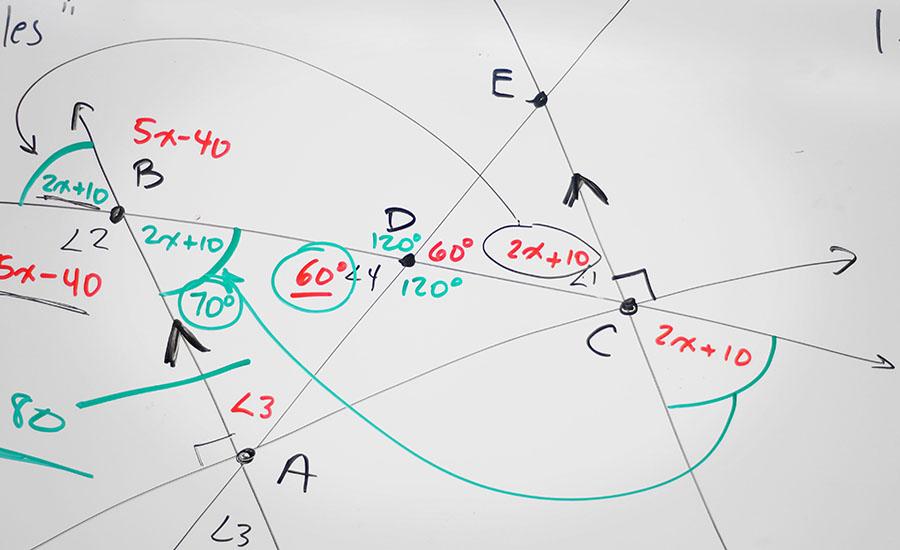How could a zombie outbreak happen? In this lab, students will observe how quickly an unknown disease can spread by mixing water from a cup with their peers' water. Contaminated students have iodine
This lesson is designed to create a 3D model and circle graph that will represent where water in different parts of the hydrosphere is located. The purpose is to get students thinking and problem
In this lesson, students will construct an argument supported by evidence for how plants and animals (including humans) can change the environment to meet their needs. There is a story integration
Students will learn about animals that are native to their area and design and engineer their own animal bridge to help a specific animal species of their choosing to cross the road safely. There is
This lesson plan will encourage students to reconstruct one of the most ancient engineering designs. Not only will they explore how canals have shaped human survival, but also how we continue to use
This lesson discusses winter weather and snow. We will create a recipe for “snow” following step-by-step directions that includes an addition math problem. Student will be responsible for measuring
This lesson has an inquiry hands-on approach, students design a protocol to isolate microbes and test how efficient their method is by comparing with the class results. This is presented under the
This lesson is a dissection of a flower native to Arizona. Students will identify the parts of the Arizona Yellow Bell, while learning what characteristics are needed to make a flower in Arizona
When Res is hurling towards Mars, he needs a parachute that will help him land safely. Can you design a parachute that will help Res land safely on Mars? Students will design a parachute using coffee
Students will gather information to develop a model about the essential elements needed by plants in order to grow and survive in this hands-on lesson. They will then apply this knowledge by
Are you ready to learn about volcanoes?! In this engaging lesson, students will identify the most common types of volcanoes, analyze how volcanoes are formed, share with groups to compare design ideas
It's slime time! Get ready to explore thermal energy in this hands-on lesson. Students will see evidence of heat transfer by creating color-changing slime!
It's 3D printing time! In this lesson, students will design a creation all on their own and input their design into a 3D printing program. They will then print their creations and become a maker!
This lesson allows students to work in teams to determine the specific function of an organelle in the cell. Rather than having students try and memorize the function of each organelle, the focus is
The lesson is designed to engage 3rd-grade students in hands-on exploration of scientific and mathematical concepts using the Dash robot. The lesson aligns with the Arizona Science Standards for 3rd
This thematic unit has four lessons which will introduce students to engineering, the engineering design process, and facing challenges. Over the course of the four lessons, student will learn how to
This thematic unit has four lessons which introduce students to engineering, the engineering design process and facing challenges. Over the course of the four lessons, student will learn how to
This thematic unit has four lessons which introduce students to engineering, the engineering design process, and facing challenges. Over the course of the four lessons, students will learn how to
This thematic unit has four lessons which introduce students to engineering, the engineering design process, and facing challenges. Over the course of the four lessons, students will learn how to
Students use a solar panel and motor to create a solar-powered amusement park ride that spins. Activity designed for students to work in teams. Students are provided solar cells, motors, propellors
Students will design and build their own popsicle stick catapults, exploring principles of force, motion, and engineering. This lesson does have a Halloween theme to it, but can be modified is needed.
Have you ever wondered how ducks stay warm and dry while swimming in cold water? Students will create a duck and then be able to test their theory!
Featured Lesson Plans
Check out these notable lesson plans.

Students use Google Earth Timelapse to observe changes to glaciers over time before completing an investigation on the effects of melting sea ice and land ice on global sea level rise. This

This is the second lesson plan that goes with the series of four lesson plans for the book Song for a Whale by Lynne Kelly. This lesson focuses on vibrations, sounds, and music. The final project is

SNOW
This lesson includes literacy, math, and art about snowflakes. Within math, students will dive into an analysis of angles within a common snowflake. Students will listen to an informational text about


